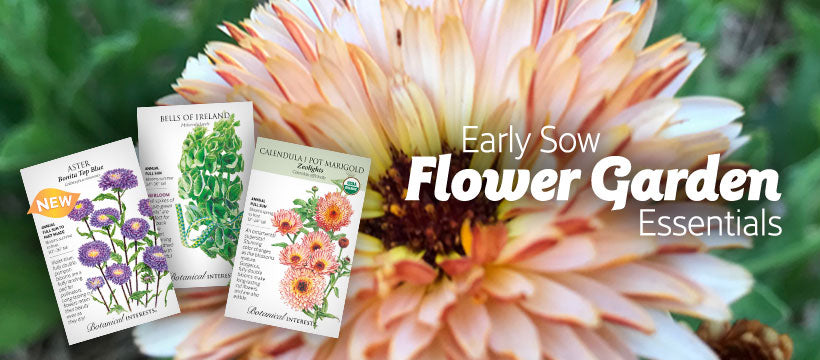What has beautiful flowers, delicious leaves, pods of delightful protein, and makes a great cover crop? Fava beans! This year I am sowing fava beans in my garden beds for an early-season edible crop, and for soil amendment. Dual-purpose plants? That's my favorite kind!

Did you know fava beans have been cultivated since the Bronze Age? In the Middle Ages, there was a drought in Sicily that gave fava beans a mystical status. After Sicilians prayed to St. Joseph, they discovered fava beans were the only crop to survive, saving Sicilians, and making favas part of St. Joseph's day traditions on March 19th. Dried favas carried in pockets and placed in pantries are believed to encourage bounty (you may want to try this also, if you have teenagers, too).
While they are a staple in Europe, they are quite elusive in the U.S. In my experience, fava beans (also called broad beans, faba beans, pigeon beans, horse beans, or Windsor beans) are relegated to gourmet restaurants and limited availability at specialty grocers and farmer's markets. Because they need cool weather to produce/grow, fresh favas are quite seasonal. By growing them at home, I can enjoy them at their peak. Their flavor is nothing like the canned or dried beans and I have to admit that fresh is my favorite way to enjoy them. Fresh fava beans are (this description is in the next paragraph) such a special, fleeting treat it warrants a celebratory home-cooked meal with friends.
You can eat almost every part of the fava plant. Young, tender pods are edible at 2" and can be enjoyed fresh, much like a snap bean. For mature sized fresh beans, harvest when pods are green and the seeds inside are light green. At this stage, fava beans have a delicately nutty, buttery, and light pea flavor. Boil bean seeds briefly until they no longer float, then peel the bean's outer layer, and voila! Beans are delicious simply sautéed in butter with herbs and salt and pepper.
Similar to pea shoots, the spinach-flavored leaves are edible and can be enjoyed raw or cooked any way you enjoy other greens. The stunning flowers are also edible with a sweeter, milder flavor.
Cutting or pinching the top leaves off encourages plants to branch. If you know you won't be able to eat all your favas fresh, you can let them dry right on the plant. Dried beans are ready when pods are dry and brown, and the seeds inside are hard and dry. Harvest the beans and store them in an airtight container in a cool, dry place until you are ready to use them. Then, you can boil them or cook them in soups much like any other dried bean.
Favas, especially small-seeded types like Sweet Lorane Improved are an excellent cover crop, enriching the soil with nitrogen and organic matter. Favas and peas pull nitrogen out of the air and make it available to other plants in the soil. If you are using favas only for cover crop, cut them down just as flower buds appear, and work them into the soil 3 or more weeks before planting in the same area, giving them time to break down. You can also cut plants down and add them to your compost pile so that you can use the area right away, topping up the area with fava-enriched soil later. If you are planning on eating favas, you can work plants into the garden bed or compost pile after harvesting the beans.
Fava beans are cool-season champions. They germinate in soils as cool as 35°F and their foliage can handle temperatures in the 20s. I sow favas directly in my garden 6 to 8 weeks before the average last spring frost or in the fall, 4 to 6 weeks ahead of the first fall frost. Soaking seeds in water for 12 to 24 hours ahead of time helps germination and an inoculant (beneficial root-zone bacteria applied at sowing) can boost production but isn't necessary to grow them. Their roots are sensitive to transplanting, so we don't recommend starting fava beans indoors. Fava beans are closely related to a peas and have pea-like white flowers with black specks and whisker-like markings. Plants can reach 2'-4' tall depending on growing conditions. If you garden in a windy area consider staking or using supports with tall fava to protect them from snapping.
Windsor fava bean is an heirloom which produces up to 8 large, light green beans per 5"-6" pod.
There is so much to love about favas—from their history, to improving your soil and being delicious. Give fava beans a chance! You won't be disappointed.
CAUTION: People deficient in an enzyme called glucose-6-phosphate dehydrogenase (G6PD) should not handle seeds, consume fava beans, or inhale its pollen.

